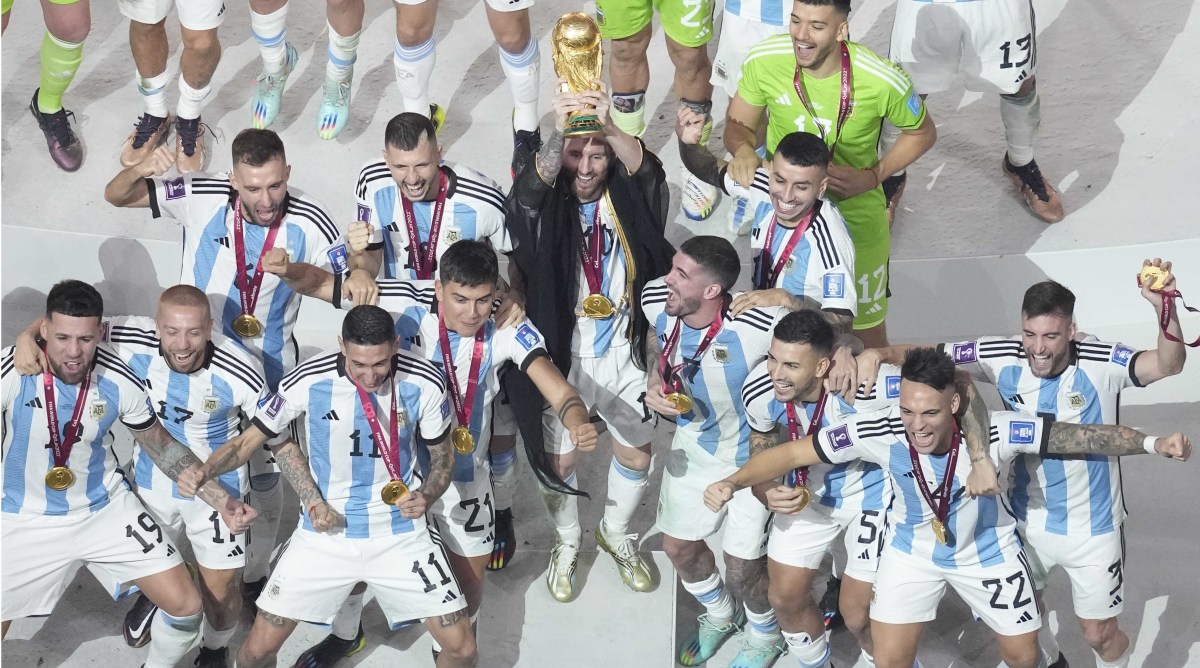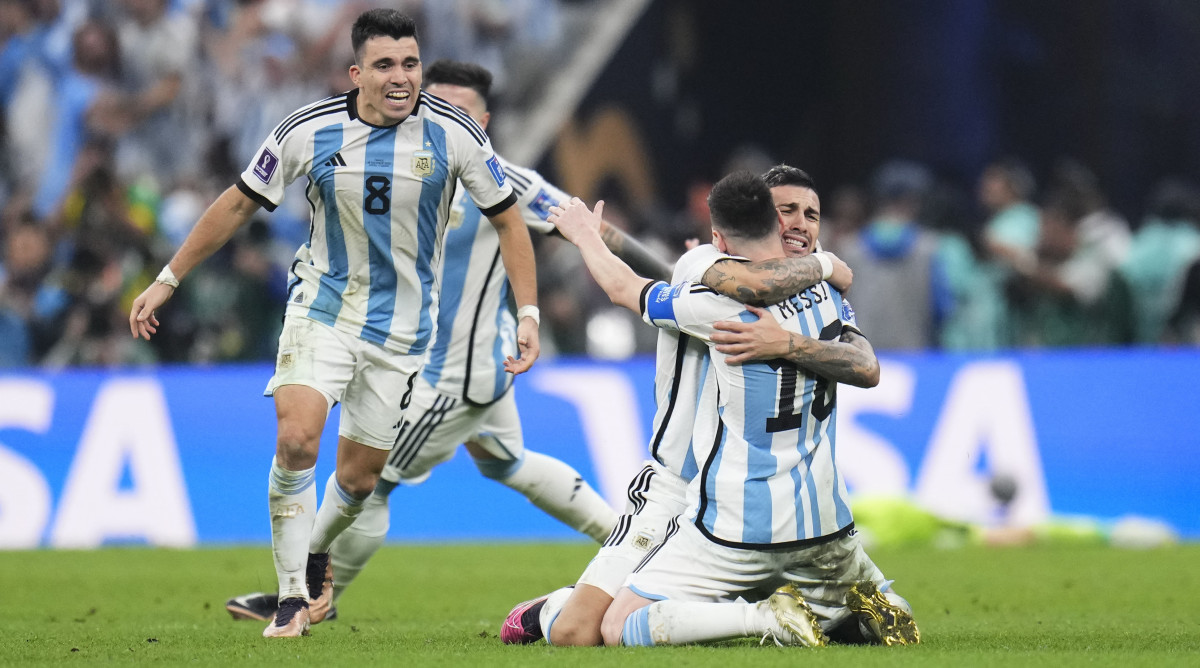Lionel Messi’s Supporting Cast Set the Stage for Argentina to Shine at World Cup
The popular myth has it that the 1986 World Cup final was about Diego Maradona and 10 others, as though he had single-handedly led a band of no-hopes to glory—which, clearly, was not the case. Maradona was the outstanding player and that team was set up for him, but Jorge Valdano was a classy center forward, Jorge Burruchaga an intelligent runner from midfielder and Sergio Batista a composed and physically imposing holding midfielder. Maradona elevated them, but no tournament is ever won by just one man.
It’s a similar story with Lionel Messi. Clearly, he exists on a plane above the rest of this Argentina side, but then he exists on a plane above almost every footballer who has ever played the game. And no matter how exceptional he was, there was need for contributions from elsewhere. Julián Álvarez, who came into the side only after the opening defeat to Saudi Arabia and scored four goals, proved the perfect foil for Messi, quick, cultured and a fine finisher. Emi Martínez was an aggressive goalkeeper—too aggressive for many tastes—who excelled in penalty shootouts and made a barely credible block from Randal Kolo Muani late in extra time of the final. But really it’s the midfield that provided the platform for Messi that deserves great credit.

Enzo Fernández was named young player of the tournament. The 21-year-old had already demonstrated his talent playing for Benfica in the Champions League this season, but he was a titan in midfield for Argentina, where playing as the deepest-lying player, or in a slightly more advanced role. He came off the bench against Saudi Arabia to no avail. He was a substitute again against Mexico and scored the vital second goal. He was then handed a start against Poland and responded by setting up a goal. From then on he started every game and ended up with 3.5 regains per game as well as a pass completion rate of 87.6%; a rare player who can both win the ball and retain it, while still offering a goal threat.
Alexis Mac Allister missed the Saudi debacle entirely, but started against Mexico and never lost this place. Neat and tidy, he provided an element of class to an aggressive midfield, scoring against Poland to settle the nerves, and managing an 89% pass completion rate over the tournament. But that was not sterile pressing; he was somebody who progressed the play, always looking for a way to hurt the opposition, as he did most clearly on the final, ruining on to Álvarez’s fine pass to tee up the second for Ángel Di María.
The third regular post-Saudi member of the midfield was Rodrigo De Paul, a fascinating blend of snarl and skill. He was at his best on the right of the narrow midfield four that Argentina used in both the semifinal and the final, encouraged to work the length of that flank. There was perhaps a feeling that his career had stalled slightly at Atlético Madrid and he is certainly no longer the sort of creative presence he was during his days at Udinese. Rather, there is a curious sense in which his club manager Diego Simeone has molded him into exactly the sort of player Argentina needed.
In the final, De Paul helped cut off the supply to Mbappé—until he was moved into the center just before half-time—but was also heavily involved in targeting Theo Hernández, whose attacking instincts from fullback became a vulnerability. He also took a fearsome kicking, but carried on regardless, seemingly undaunted. If there was a Messi-less man of the match award for the final, De Paul should have won it.

Leandro Paredes also played his role as a useful blocking presence in the center while Di María, after being injured against Poland, didn’t start any of the knockout games before the final. But he was superb on the left of midfield in the final, attacking Jules Koundé, scoring the second and drawing Ousmane Dembélé into the foul that brought the penalty from which Argentina took the lead.
But it was Messi’s tournament. He was the designated star and it was he who, deservedly, was named player of the tournament. But nobody can ever win a World Cup by themselves. The supporting cast also matter and, in this case, alongside the goals of Álvarez and the saves of Martínez, it was the energy and discipline of the midfield that stood out. De Paul, Fernández and Mac Allister were all necessary for Messi to do what he did, and now they are all champions.
